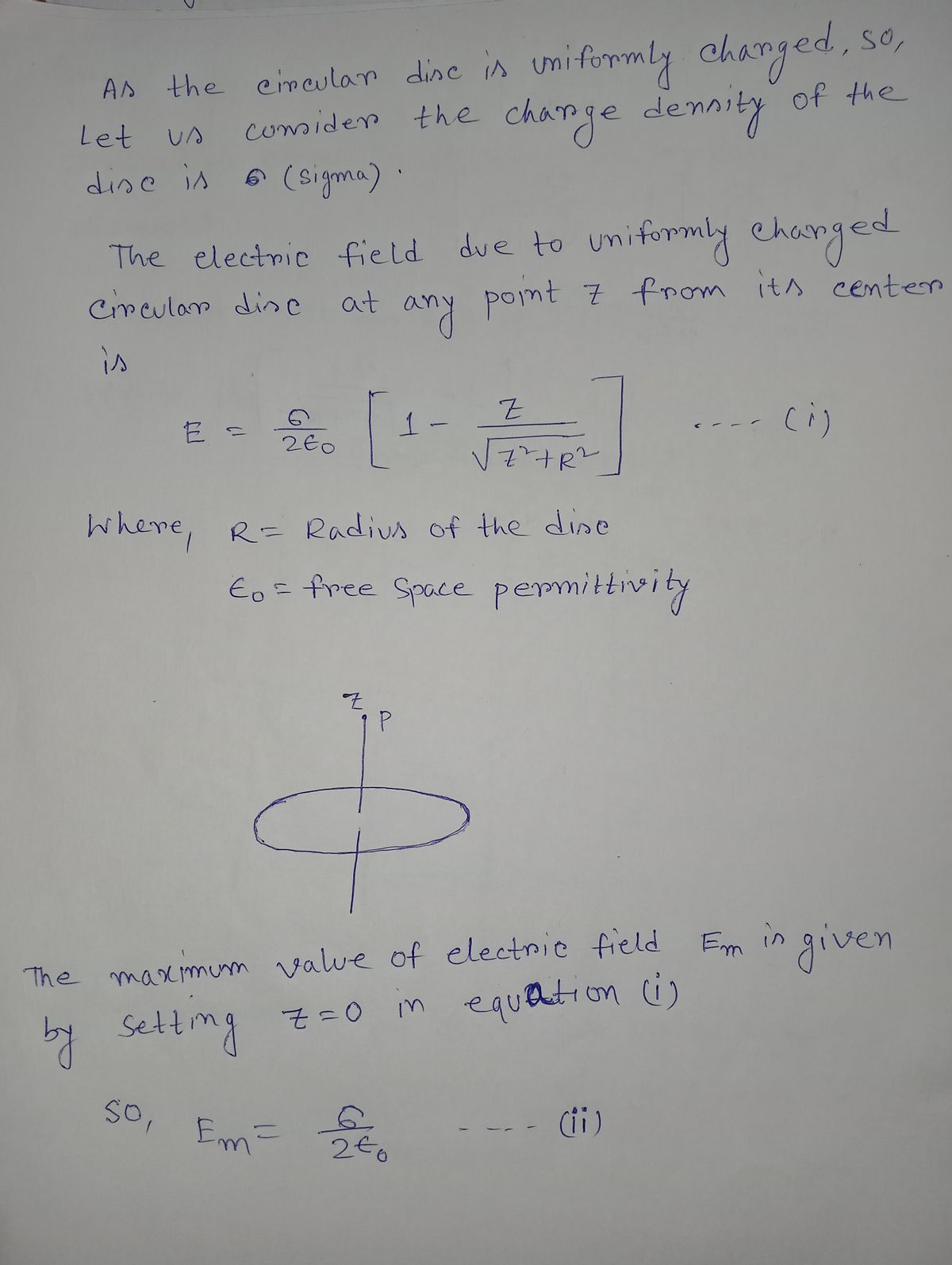The figure (a) below shows a circular disk that is uniformly charged. The central z axis is perpendicular to the disk face, with the origin at the disk. The graph (b) gives the magnitude of the electric field along that
The figure (a) below shows a circular disk that is uniformly charged. The central z axis is perpendicular to the disk face, with the origin at the disk. The graph (b) gives the magnitude of the electric field along that
College Physics
11th Edition
ISBN:9781305952300
Author:Raymond A. Serway, Chris Vuille
Publisher:Raymond A. Serway, Chris Vuille
Chapter1: Units, Trigonometry. And Vectors
Section: Chapter Questions
Problem 1CQ: Estimate the order of magnitude of the length, in meters, of each of the following; (a) a mouse, (b)...
Related questions
Question
The figure (a) below shows a circular disk that is uniformly charged. The central z axis is perpendicular to the disk face, with the origin at the disk. The graph (b) gives the magnitude of the electric field along that axis in terms of the maximum magnitude Em (at the disk surface). The z axis scale is set by zs = 8.0 cm. What is the radius of the disk?

Transcribed Image Text:The image consists of two parts: a diagram labeled (a) and a graph labeled (b).
**Diagram (a):**
- This is an illustration of a flat, oval-shaped surface with a vertical arrow labeled "z" passing through it. The shape appears to represent a disc or circular plane oriented perpendicular to the z-axis, indicating the direction of interest or measurement.
**Graph (b):**
- The graph depicts a curve that shows the relationship between the electric field magnitude (\( E_m \)) and the distance along the z-axis (\( z \)).
- The vertical axis represents the electric field magnitude with markings at \( E_m \) and \( 0.5E_m \).
- The horizontal axis represents the distance in centimeters (cm), starting from 0 and ending at \( z_s \).
- The curve starts at \( E_m \) when \( z = 0 \) and decreases monotonically, approaching a value slightly above \( 0.5E_m \) as \( z \) approaches \( z_s \).
- The plot implies an exponential or logarithmic decrease in the electric field magnitude with increasing distance along the z-axis. Major grid lines are present to aid in reading the values.
This image could represent a physical scenario where the electric field strength diminishes with distance from a planar source.
Expert Solution
Step 1

Step by step
Solved in 2 steps with 2 images

Knowledge Booster
Learn more about
Need a deep-dive on the concept behind this application? Look no further. Learn more about this topic, physics and related others by exploring similar questions and additional content below.Recommended textbooks for you

College Physics
Physics
ISBN:
9781305952300
Author:
Raymond A. Serway, Chris Vuille
Publisher:
Cengage Learning

University Physics (14th Edition)
Physics
ISBN:
9780133969290
Author:
Hugh D. Young, Roger A. Freedman
Publisher:
PEARSON

Introduction To Quantum Mechanics
Physics
ISBN:
9781107189638
Author:
Griffiths, David J., Schroeter, Darrell F.
Publisher:
Cambridge University Press

College Physics
Physics
ISBN:
9781305952300
Author:
Raymond A. Serway, Chris Vuille
Publisher:
Cengage Learning

University Physics (14th Edition)
Physics
ISBN:
9780133969290
Author:
Hugh D. Young, Roger A. Freedman
Publisher:
PEARSON

Introduction To Quantum Mechanics
Physics
ISBN:
9781107189638
Author:
Griffiths, David J., Schroeter, Darrell F.
Publisher:
Cambridge University Press

Physics for Scientists and Engineers
Physics
ISBN:
9781337553278
Author:
Raymond A. Serway, John W. Jewett
Publisher:
Cengage Learning

Lecture- Tutorials for Introductory Astronomy
Physics
ISBN:
9780321820464
Author:
Edward E. Prather, Tim P. Slater, Jeff P. Adams, Gina Brissenden
Publisher:
Addison-Wesley

College Physics: A Strategic Approach (4th Editio…
Physics
ISBN:
9780134609034
Author:
Randall D. Knight (Professor Emeritus), Brian Jones, Stuart Field
Publisher:
PEARSON